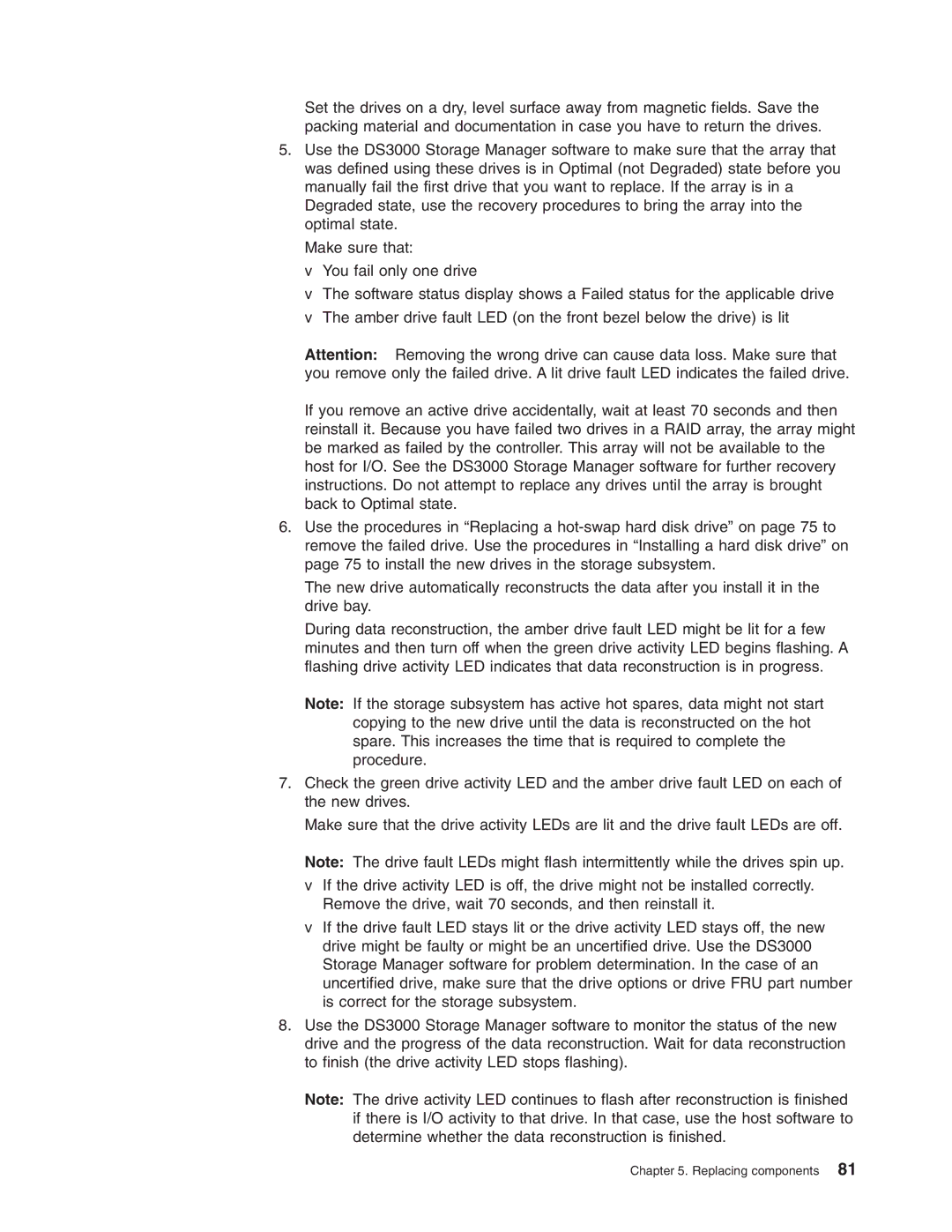Set the drives on a dry, level surface away from magnetic fields. Save the packing material and documentation in case you have to return the drives.
5.Use the DS3000 Storage Manager software to make sure that the array that was defined using these drives is in Optimal (not Degraded) state before you manually fail the first drive that you want to replace. If the array is in a Degraded state, use the recovery procedures to bring the array into the optimal state.
Make sure that:
v You fail only one drive
vThe software status display shows a Failed status for the applicable drive
vThe amber drive fault LED (on the front bezel below the drive) is lit
Attention: Removing the wrong drive can cause data loss. Make sure that you remove only the failed drive. A lit drive fault LED indicates the failed drive.
If you remove an active drive accidentally, wait at least 70 seconds and then reinstall it. Because you have failed two drives in a RAID array, the array might be marked as failed by the controller. This array will not be available to the host for I/O. See the DS3000 Storage Manager software for further recovery instructions. Do not attempt to replace any drives until the array is brought back to Optimal state.
6.Use the procedures in “Replacing a
The new drive automatically reconstructs the data after you install it in the drive bay.
During data reconstruction, the amber drive fault LED might be lit for a few minutes and then turn off when the green drive activity LED begins flashing. A flashing drive activity LED indicates that data reconstruction is in progress.
Note: If the storage subsystem has active hot spares, data might not start copying to the new drive until the data is reconstructed on the hot spare. This increases the time that is required to complete the procedure.
7.Check the green drive activity LED and the amber drive fault LED on each of the new drives.
Make sure that the drive activity LEDs are lit and the drive fault LEDs are off. Note: The drive fault LEDs might flash intermittently while the drives spin up.
vIf the drive activity LED is off, the drive might not be installed correctly. Remove the drive, wait 70 seconds, and then reinstall it.
vIf the drive fault LED stays lit or the drive activity LED stays off, the new drive might be faulty or might be an uncertified drive. Use the DS3000 Storage Manager software for problem determination. In the case of an uncertified drive, make sure that the drive options or drive FRU part number is correct for the storage subsystem.
8.Use the DS3000 Storage Manager software to monitor the status of the new drive and the progress of the data reconstruction. Wait for data reconstruction to finish (the drive activity LED stops flashing).
Note: The drive activity LED continues to flash after reconstruction is finished if there is I/O activity to that drive. In that case, use the host software to determine whether the data reconstruction is finished.
